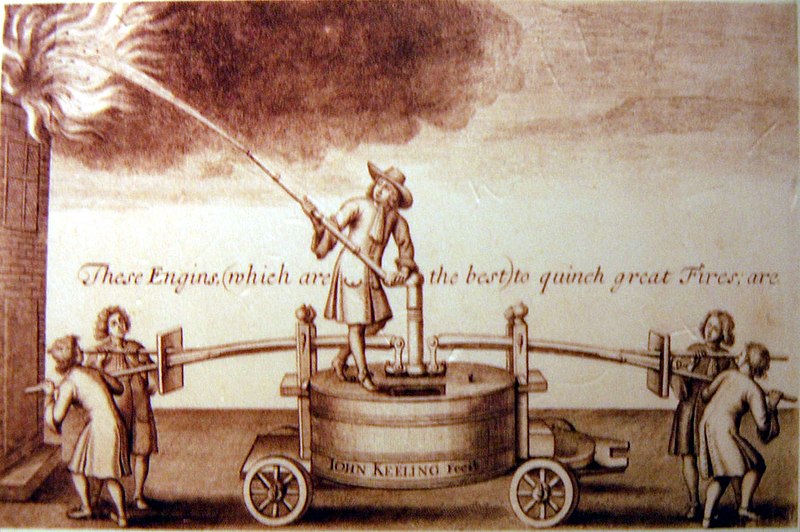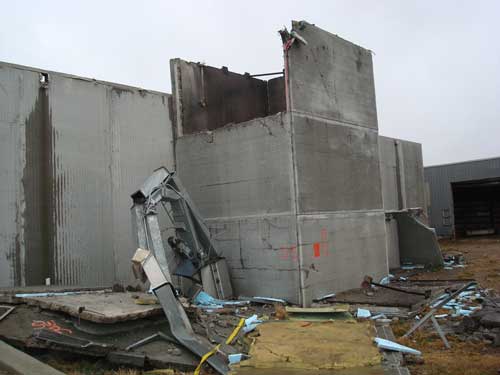Currently the U.S. Chemical Safety Board is investigating the October, 9, 2012 catastrophic explosion at a East Rutherford, NJ printing ink manufacturer resulting in three workers hospitalized. In a recent news account according to Daniel Horowitz, Managing Director of CSB, "will be looking for anything that could have caused an
undue amount of dust to accumulate,"
Printing inks are made of four basic components
:
• Pigments - to color the ink and make it opaque (i.e. carbon black, etc)
• Resins - which bind the ink together into a film and bind it to the printed surface
• Solvents - to make the ink flow so that it can be transferred to the printing surface
• Additives - which alter the physical properties of the ink to suit different situations
 |
| Credit: BRANCHER, Tremblay-les-Villages France |
Industry Safety Guideline: Carbon black does not pose an explosion risk?
"There has been no recorded industry experience to suggest that carbon black dust concentrations pose an explosion hazard" International Carbon Black Association (ICBA) (page 8 .pdf) In contrast, according to a recent news account, "...carbon compound ignited, causing an explosion and a fire in ductwork ..." Will this incident be a wake-up call for industry handling and processing carbon black to reevaluate their fire and explosion risks?
Recognizing dust explosion hazards of carbon black appears to be a global problem. For example, on the governmental agency web page for the Canadian Centre for Occupational Health and Safety (CCOHS) there is an alarming statement noting carbon black is not a dust explosion hazard.
"In general, pure carbon black is difficult to ignite, does not undergo spontaneous combustion, and is not a dust explosion hazard."Yet also conflicting info on the same CCOHS web page where carbon black is a dust explosion hazard
"Dust explosions may occur if the oil content exceeds 13% (MINIMUM CLOUD IGNITION TEMPERATURE reported as 730 deg C). If air concentrations exceed 50 or 60 g/m3, carbon black may explode in the presence of a high energy ignition source, such as a gas explosion."In contrast the explosive properties of carbon black is recognized in this MSDS Specialty Carbon Blacks used in the printing inks market .PHYSICAL AND CHEMICAL PROPERTIES (page 6 .pdf) MEC: 50 g/m^3, Dust Explosion Classification: ST 1 (VDI 2263), Pmax: 10 bar at an initial starting pressure of 1 bar. Higher starting initial pressures will yield higher explosion pressures. Maximum Rate of Pressure Rise: 30 - 400 bar/sec, Method: VDI 2263 and ASTM E1226-88 Another helpful MSDS Carbon Black "Thermal Carbon Black"- Cancarb Limited-Explosive Properties: http://www.cancarb.com/pdf3/MSDS_English.pdf (page 7 .pdf) Revised Date: November 30, 2011
The story gets more interesting with October 4, 1999, Titan Tire Corporation accident "While running a batch of stock, a mixer ejected a large cloud of carbon black dust into the work area and up to the ceiling of the building. The dust ignited, causing a large flash fire that seriously burned two employees"
"Respondent relies on a publication by the Canadian Centre for Occupational Health and Safety (Exh. R-1). This is a document apparently taken from the internet that indicates that dust explosions may occur if oil content exceeds 13 percent and that carbon blacks with over 8 percent volatiles may be an explosion hazard. "
"Respondent's employees testified that the oil content was less than 6 percent by weight, but did not address the other ignitable chemicals. It presented no evidence about the four other ignitable or volatile substances in the carbon black. Knowing it had 6 percent oil content in the mixture, along with other ignitible substances, respondent should have taken reasonably diligent steps to assure that total volatiles did not exceed 8 percent or, alternatively, that its electrical equipment, fixtures and outlets in the #1 Banbury mixer area were approved for a Class II, Division 2 location."
In addition to volatile percentage it is extremely important to identify and evaluate additional ignitable substances also part of the chemical composition of carbon black. Seems industry is still having carbon black fires and explosions solely relying on outdated safety guidelines that doesn't provide comprehensive hazard communication as noted in the ICBA and CCOHS content.
CSB has investigated explosions at printing ink manufacturing facilities in the past. For example, completed CSB Investigation of a printing ink and paint manufacturing facility at CAI / Arnel >> Chemical Plant Explosion, Danvers, MA, November 22, 2006 INVESTIGATION REPORT, MAY 2008, CONFINED VAPOR CLOUD EXPLOSION (10 Injured, and 24 Houses and Six Businesses Destroyed) Interesting, nitrocellulose used in the CAI printing ink manufacturing process. More uses for nitrocellulose than just smokeless powder (guncotton) (:
Why carbon black is not recognized as a combustible dust by many stakeholders?
"Carbon black presents a fire rather than a dust explosion hazard. None of the 19 samples were ignited by the electric spark source; all but sample 73 ignited in the furnace." U.S. Dept. of the Interior, Bureau of Mines, 1965
"Pressure and rates of pressure rise developed by a dust explosion are determined in a closed steel Hartmann tube. Ignition of the dust cloud is normally produced by a 24-watt continuous spark source. For dusts that ignite with difficulty, the heated coil or gun cotton source is tried." Laboratory equipment and test procedures for evaluating explosibility of dusts. U.S. Dept. of the Interior, Bureau of Mines, 1960
So should dusts not ignited by an electric spark source in a closed steel Hartmann tube a half a century ago still “not” be considered a combustible dust in a 21st century hazard assessment? Interesting all the industrial carbon blacks (acetylene black, channel black, lamp black, furnace black, and thermal black) have the same CAS 1333-86-4.
"CAS Numbers are not related to chemistry. A CAS Number has no inherent meaning but is assigned in sequential, increasing order when the substance is identified by CAS scientists for inclusion in the CAS REGISTRY database." "The lowest numeric CAS registry number is 50-00-0 corresponding to formaldehyde. Thus formaldehyde was potentially the first compound to receive a CAS registry number"Users of MSDS's beware in solely relying on CAS registry numbers as this does not provide comprehensive ignition sensitivity and explosive severity data in assessing fire and explosion risks of the different types of carbon black produced by partial combustion or thermal decomposition of gaseous or liquid hydrocarbons.
Volatile printing ink solvents + combustible dust = hybrid mixture?
CSB US Ink catastrophic explosion investigation.
"Horowitz said it's too early to know if carbon black dust fueled the explosion, adding investigators also are looking at a resin binder — a filmy adhesive — present in the area."
Primary chemical components in the manufacturing of printing ink in addition to carbon blacks (pigments) and resins (vehicle or varnish) include additives and solvent. Examples of solvents include mineral oil, other aliphatic and aromatic hydrocarbons, ketones, esters, and alcohols. So what is the probability of occurrence in developing hybrid mixtures in the printing ink manufacturing process?
Conclusion
CSB investigators have their work cut out for them in determining root and contributing cause as a result of their key findings. The process becomes very intriguing in determining root fuel sources with the potential explosive atmospheres generated from solid and liquid ingredients in manufacturing printing ink with a myriad of permutations depending on the specific ink processed in the pre-mix room.
Hopefully this discussion will provide insight on the combustibility of carbon black processed and handled in all sectors. If combustible dust is found to be involved in ignition it will put a new face on the OSHA Combustible Dust National Emphasis Program (NEP) that doesn't recognize printing ink manufacturing NAICS 325910 as having a potential for combustible dust related incidents. This could be reminiscent of the Hoeganaes CSB Case Study where CSB recommended:
"Revise the Combustible Dust National Emphasis Program (NEP) to add industry codes for facilities that generate metal dusts (e.g., North American Industrial Classification System, NAICS, code 331111 Iron and Steel Mills, and other applicable codes not currently listed). Send notification letters to all facilities nationwide under these codes to inform them of the hazards of combustible metal dusts and NEP coverage."Resources:
What is Ink? (US Ink)
How is News Ink Manufactured (US Ink)
Printing Ink Technology and Manufacture (New Zealand Institute of Chemistry)
Ink Mixing, Pre-Dispersing, Grinding, etc. (Netzsch)












 RSS Feed Subscribe
RSS Feed Subscribe